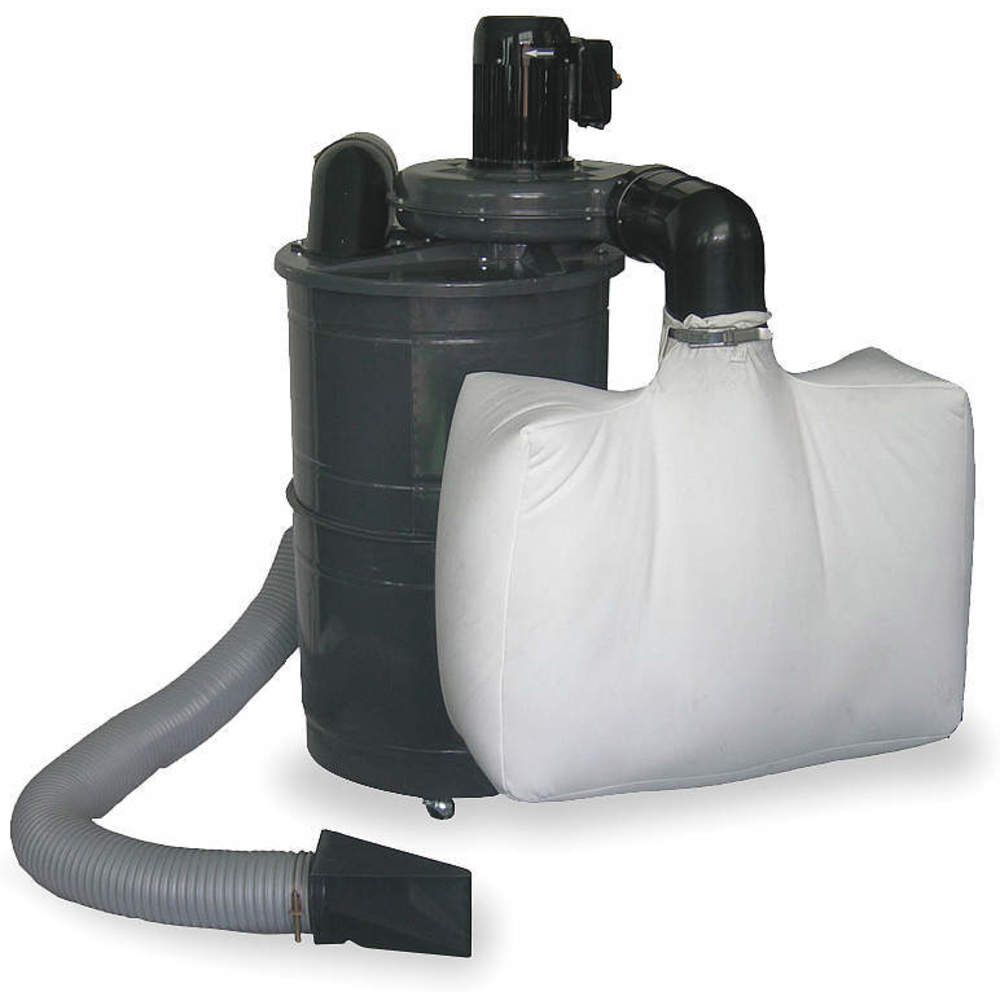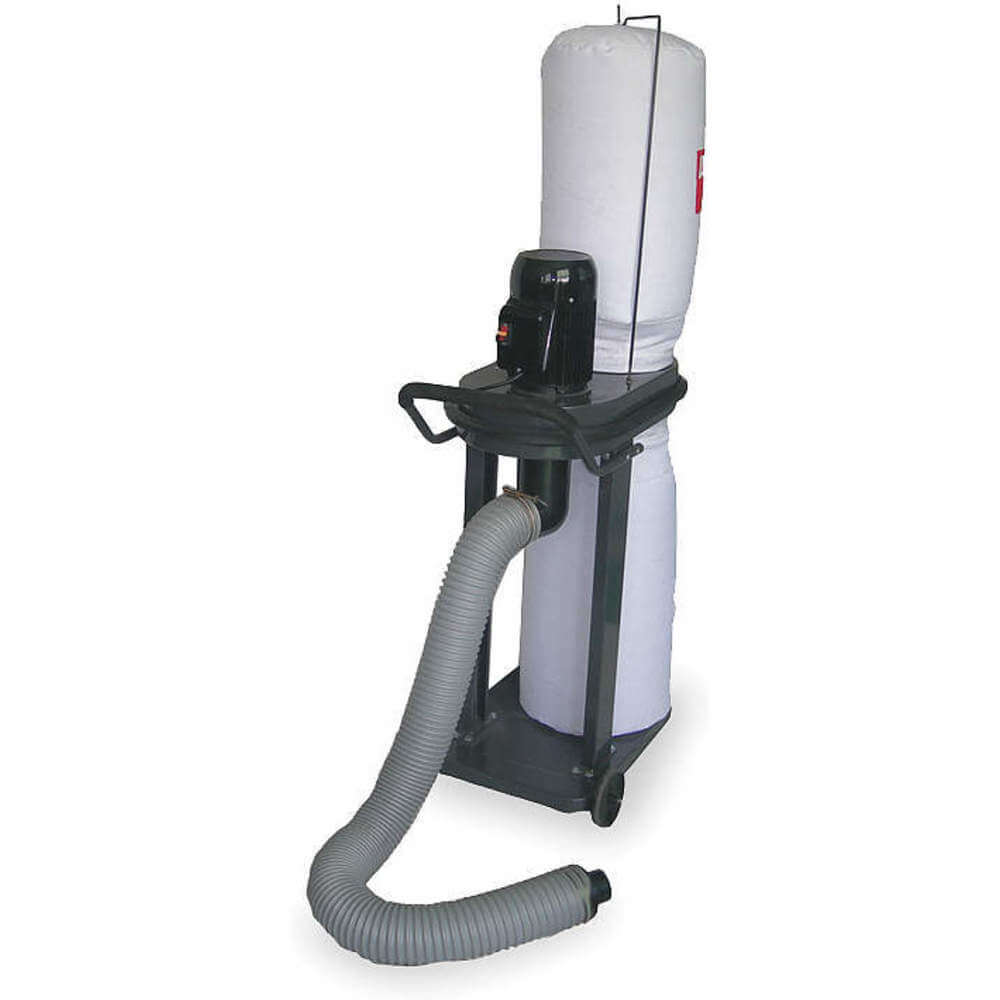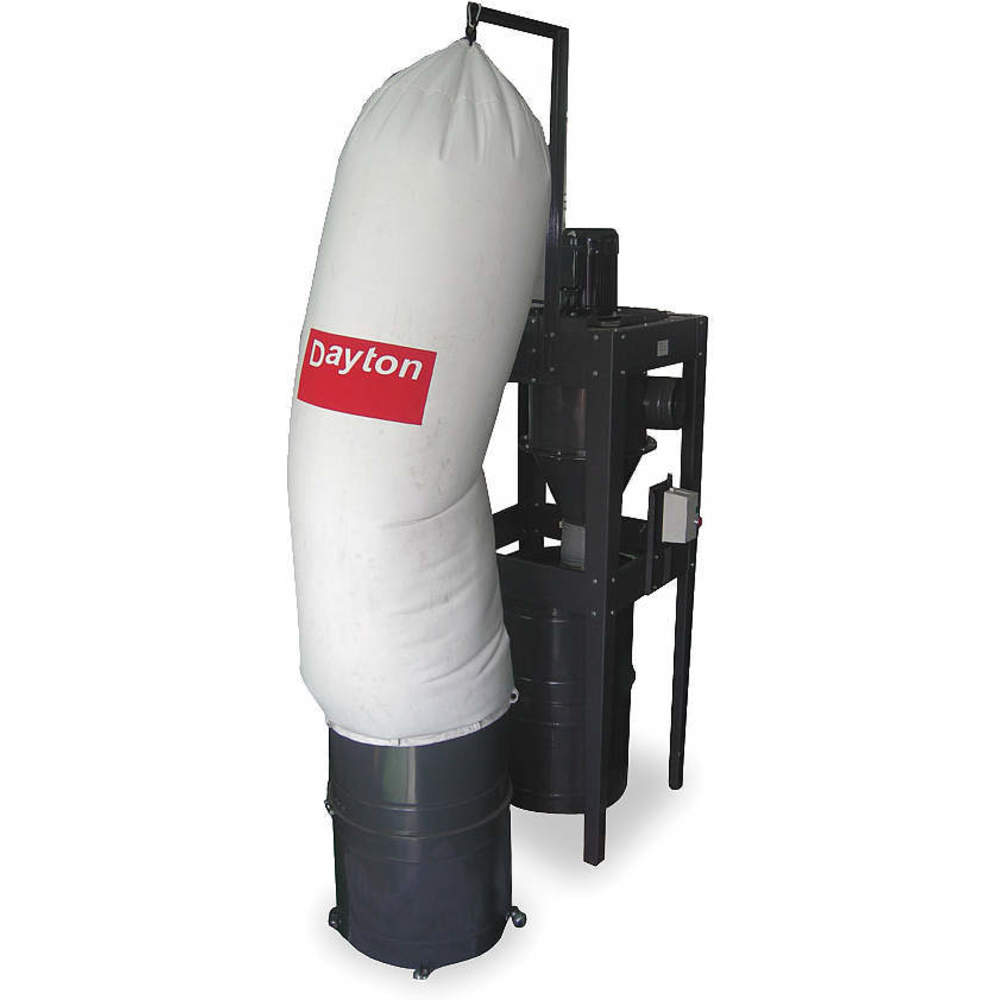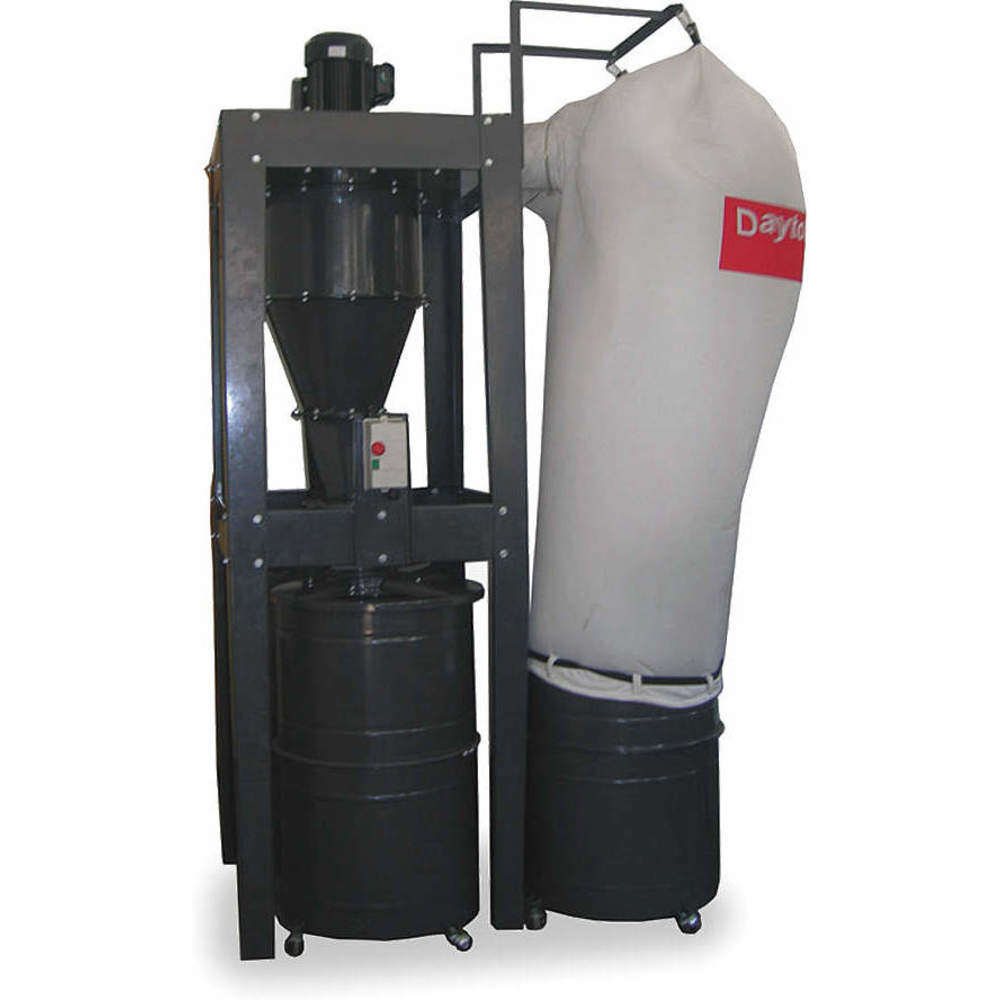Dayton 3AA17 dust collector is suitable for enhancing air quality and maintaining a clean workspace employed in workshops, manufacturing facilities and woodworking shops. Its efficient dust filtration and collection capabilities aid in preventing respiratory hazards, promoting worker safety and preserving machinery longevity.
Working Mechanism:
- Contaminated air is drawn into the dust collector through the inlet, typically positioned near areas with dust generation.
- The incoming air undergoes cyclonic separation within the collector's chamber. This action propels larger particles and debris against the walls due to centrifugal force, causing them to descend into a collection bin at the base.
- The remaining air traverses a sequence of filters to trap finer particles.
- As air courses through the filters, finer dust particles adhere to the filter media due to their size and electrostatic attraction. This hinders their release back into the environment.
- Filtered air emerges from the dust collector through an outlet, now substantially devoid of dust and contaminants.
- The collected dust and debris that accumulate at the collector's chamber bottom can be periodically removed from the collection bin.
Frequently Asked Questions:
Q. How does the efficient filtration system contribute to air quality?
A. The advanced filtration system effectively captures dust particles, leading to cleaner and healthier air, thus promoting a more comfortable and productive environment.
Q. What does CFM mean in dust collection?
A. CFM stands for cubic feet per minute and quantifies the airflow within air conditioning, heating and ventilation contexts. In the context of dust collection, CFM measures the volume of air that can be effectively transported from a given area per minute.
Q. How often should I clean the filters of this Dayton 2-stage dust collector?
A. Filter cleaning frequency depends on factors like dust load and usage. Monitor pressure differentials across filters. Any significant increase indicates clogging. Regular cleaning ensures optimal performance.
Q. How is dust load calculated?
A. To determine the dust load, multiply the amount of dust entering the collector (in pounds per hour) by 7000 grains per pound. Calculate the total air volume for the system within an hour. Lastly, divide the grains per hour by the total air volume in cubic feet per hour to obtain the dust load in grains per cubic foot.
Q. What maintenance steps are recommended for Dayton portable dust collector?
A. Routinely inspect seals, gaskets and filters for wear or damage. Clean filters as needed. Check the motor, fan & electrical components and lubricate moving parts if required.
 Change Country
Change Country




